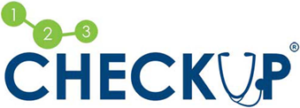5 Reasons to Buy from Us
One- Is product health Canada approved?
This is by far the most important factor and concern many customers have. Health Canada has been working in the best interest of the public to set one of the world’s most comprehensive and diligent processes for importing and marketing medical devices. Any company which imports and distribute products in Canada would need to have a valid Medical Device license meaning that the product has been tested and inspected by Health Canada to make sure is within the set guidelines. Unfortunately, Health Canada cannot have much control over companies who are based out of Canada, and also consumers who buy a product for personal use will not be addressed by the Health Canada device license requirement. Potentially a customer could be buying a product which is made of inferior materials with low accuracy and health hazard from vendors which are based out of Canada even though the sold advertises shipping to Canada. One of the ways to spot this issue is the fact that many online vendors mention Sports use or leisure use or aviation use on the product which means the product is not a medical-grade product and is not reliable. All the product range listed on this website have valid medical device license issued by Health Canada.
Two – Where is the product shipped from?
We sent all our products from Canada. We have been using Canada Post as our main shipping partner since we can office our products to every single postal code in the country.
When you buy products that are shipped from outside Canada, you will not have any control over the shipping time as national holidays, customs clearance and many other factors can delay deliveries even up to a month.
Three- Is the price in the Canadian dollar and all other charges are included?
All our products are in Canadian Dollars. And the product customs and import duty had already been paid before we imported the product to Canada. Our customers only pay the price which is listed and they are not liable to any import duty.
When you buy products from overseas and non-Canadian vendors, firstly you might go through the currency conversion which is not much in your favor most of the time as there is also the credit card company issues margin involved. Moreover, when the product comes to Canada- CBS (Canadian border services) will inspect the package and depending on the value declared would add a percentage of custom duty on that and the receiver is liable for paying for that before the product gets released.
Four- What if I would need to return the product if the package is unopened?
We do understand that from time-to-time people’s decisions or needs change. Returning the product to us is pretty simple. You send the product back with your preferred shipping method. You will be liable for a full refund after a 15% re-stocking fee. (This is a fee covering the initial shipping cost that we send you the product)
When you purchase a product from overseas, we would certainly say “changing mind is not an option”. Your return shipping charges could be easily multiple times what you paid for the product.
Five- What warranty do I have for the products?
We have confidence in our product offering. Within the one year after the purchase for any reason if there has been an issue with the product you simply contact us via customer-serivce@123checkup.com. We will send you a pre-paid shipping label- you simply drop the faulty unit at the nearest Canada Post. Upon receiving the product, we will be sending you a brand new unit.
In contrast, many overseas sellers offer a warranty knowing the fact that it will never be economically viable for the customer to claim the warranty in case the product fails. Simply the shipping charge for sending the product will be very high. Most vendors would need 2-3 weeks to repair the unit and send you back with another 3-4 weeks transit time
We always trust our customers’ gut feelings and concerns. We are happy to answer any questions you might have.



